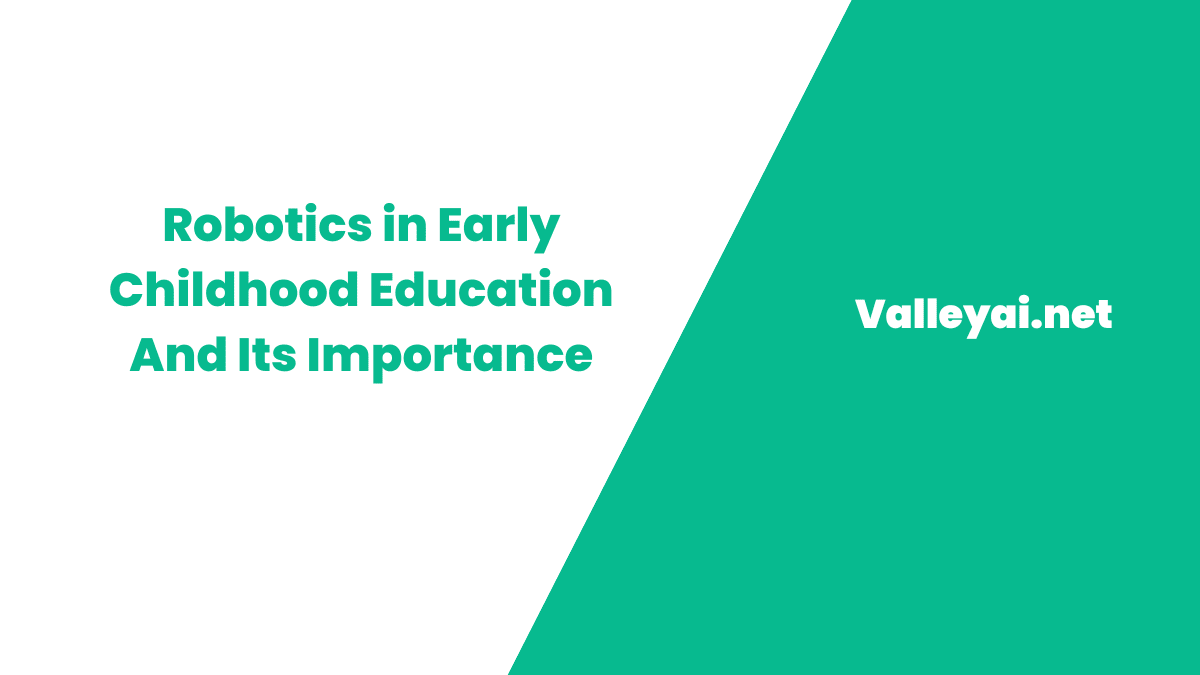A world as changing as ours needs prepared people. Robotics in early childhood education, coupled with an early childhood education degree, seeks to train children in a language and culture that is just as significant as reading or writing, that is, programming. Today technology surrounds everything and it is better to know how to interact with it.
On the other hand, robotics is not the same as programming. Because although it is true that they are closely related, both are aimed at developing different skills in the little ones. In this article, we will solve your doubts, in case you do not know how your son or daughter learns at school.
What you should know about robotics in early childhood education
Robots make our lives easier and our children too. For many years, schools have been experimenting with the introduction of teaching techniques based on the use of robots. These tools still need further adaptation to the educational environment, but they are already showing their benefits to the little ones.
You may be interested in early childhood education conferences 2024.
What is robotics in early childhood education?
Robotics is a widely extended discipline in all school classrooms. It consists of the implementation of interaction techniques with students, using robots and programming to improve their cognitive and functional development. In this way, they can optimize, while they play, very useful skills for their adult life.
The concept of “educational engineering” is a movement to find new didactic approaches within the classroom. Therefore, robotics in education helps to enrich children’s ability to explore and manipulate through their own experiences. Including those who have obtained a 90-hour child care certification from CCBC.
With robots, it is possible to teach content together with different areas of knowledge, a process accredited as interdisciplinary teaching. In addition, in early childhood education in Maryland, its effectiveness in learning and good socialization of students in the classroom has been demonstrated, aligning with the standards set by the Maryland State Department of Education.
Floor robots
Floor robots are particularly popular in child care settings and classrooms. Regarding the type of these robots, the most popular in the classrooms are the ones on the floor. Programming concepts related to displacement are worked on with them. Thus, possible difficulties related to spatial orientation and sequencing are observed.
The teacher has the possibility of exchanging the program according to the needs of the class. They usually have a button panel at the top with instructions for moving. Thus, it helps to improve children’s spatial reference, logical reasoning, and laterality in relation to writing.
Why are robots used in early childhood education?
Our current immersion in the technological network is evident. In the case of preschool children, the implementation of techniques that help promote interactive thoughts is very beneficial. This will make it easier for them to solve problems and cultivate other areas of knowledge.
Thus, for example, many studies carried out with preschool children demonstrate the effectiveness of these robots in the classroom. They are often related to the concepts of programming, space, time, distance, and velocity.
Within the implication that students have, it is worth highlighting the role of the teacher. His way of approaching the techniques is crucial for their development. In this way, a climate of trust and emotion is created that reinforces the informed and responsible use of technology.
What are the objectives of robotics in early childhood education?
The main objective is not that children are programmers from a very young age. Robotics creates a space that favors the acquisition of knowledge, even for those pursuing a BS in early childhood education. This allows the child to create their own mechanisms to solve the problems that arise.
Starting from this base, there are some areas in which emphasis is placed:
- Computational thinking: Raised from the resolution of problems, the design of systems, and the human understanding with the point of view in computing. In the case of children, these skills are essential to growing up in a world full of technological challenges.
- Creative thinking: The approach to problems in dynamics with robots helps in the growth of originality, the fluidity of ideas, and the analysis of situations. It also contributes to proposing strategies worked in the classroom with real scenarios of their immediate environment.
- Space perception: The order of actions and reaction time are two important activities for the development of your child. At these ages, working with robots helps the spatial evolution of the child’s body and with the objects in her environment. This articulates the dynamic control and coordination of his own body, which is emphasized in early childhood education courses.
What are the benefits of using robots in preschool children?
In short, robotics is a doorway to the world today. With the new techniques and their implementation in the classroom, learning spaces are created. In this way, they increase the quality of education for students.
Here you can see 5 benefits of using robots in children’s classrooms.
- Programming is the literacy of the 21st century: The current paradigm shift with technological development is evident. In his time it was writing and today it is programming. Not all children have to work at it, but it gives them a tool to interact with the culture and the rest of the world.
- Coding brings computational thinking skills: We’ll talk about this relationship in detail later. However, it is clear that children develop their ability to sequence with the use of robotics. This is imperative in reading and math.
- Programming becomes a game: As if it were the schoolyard, children experiment with multiple tools to develop their thinking. Meanwhile, they play and have fun with something that shapes them for the future.
- With robots, coding is tangible and without screens: A child learns much better with his body in motion. Working without screens stimulates children’s thinking. Thus, the simple activity of a robot or construction with objects is a source of creativity.
- Programming introduces the process to design engineering: Expose students to problems to imagine, plan a solution, execute it, and share it with their peers. This encourages them and gives them collaborative social skills.
Relationship between robotics and computational thinking in early childhood education
Currently, these two concepts create a bit of controversy when they are put together. Some studies show that there is no relationship between them. Others, quite the opposite. That is, robotic techniques do not have to lead to an increase in computational thinking in students, although they are very close. Programming is the bridge between the two.
On the other hand, there is a context in schools that is still in the learning phase. These concepts can be abstract even for the teachers who teach these dynamics. Therefore, if some basic action guidelines are not adapted, robotics in early childhood education may not be enriching for the development of logical computational thinking.
Likewise, it is demonstrated that the educational benefits of robotics are tangible. This is why floor robots stand out. They are the tools for children at an early age with the best results in many studies. It is very likely that your child will find one of these devices at school.
Resume
The technological process is unstoppable. It may be difficult for you to adapt to this change, but your children have the tools to grow with this new language. It’s like being bilingual. With robotics, they will have skills and abilities for a more competitive world.
Therefore, in the opinion of Aark Learnings using innovative techniques for the education of children in kindergarten is essential. The best of all? They will have fun playing with these tools that help cultivate their imagination.
Admin
My name is Kaleem and i am a computer science graduate with 5+ years of experience in AI tools, tech, and web innovation. I founded ValleyAI.net to simplify AI, internet, and computer topics while curating high-quality tools from leading innovators. My clear, hands-on content is trusted by 5K+ monthly readers worldwide.

